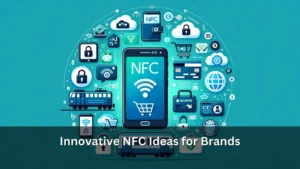Table of Contents
ToggleThe Essence of NFC
Near Field Communication (NFC) is a pioneering wireless communication technology which is built on the principles similar to those of the Radio Frequency Identification (RFID) standard. This tech marvel enables the seamless transfer of data over short distances, traditionally a few millimeters, boasting modest data transfer rates in the domain of a few kilobits per second. The bedrock of NFC’s protocols leans on the RFID standards meticulously chronicled in ISO/IEC 18092.

Operating Principle
The operational mechanics of NFC delve into the electromagnetic field dynamics surrounding an RF antenna, broadly categorized into the near field and the far field. The near field encapsulates the region in close proximity to the antenna (precisely, up to a distance calculated as 2D2/λ), rich with electromagnetic radiation. Conversely, the far field spans the region beyond, signifying the reach of electromagnetic radiation further away from the antenna.
Vast Array of Applications
NFC’s footprint extends across a wide spectrum of touchless applications, significantly marking its presence in sectors like railway and office access control, healthcare, consumer electronics, and more notably, in the realms of information exchange and payment solutions. The technology champions a dual-role mode of operation — necessitating an initiator to commence the communication and a target to respond or reciprocate.
Communication Dynamics
Communication within the NFC ecosystem bifurcates into active and passive modes, each delineated by their power engagement. In the active communication mode, both the initiator and target independently generate electromagnetic fields, taking turns to communicate. The passive mode paints a different picture where the target siphons power directly from the NFC reader, eliminating the need for an onboard power source. This clever arrangement allows for the simplistic incorporation of NFC capabilities in objects, like stickers, vastly expanding possible applications without the encumbrance of battery power.
Fundamentals of Inductive Coupling
At the heart of NFC’s operational paradigm lies the principle of inductive coupling. This phenomenon leverages the procession of a wire through a magnetic field, inducing an electric current. NFC devices are engineered with coils that, upon exposure to a magnetic field emanated by a companion NFC entity, harness generated power. This ingeniously formed power is then channeled to fuel the transmission of data over radio waves, with both the initiator and target dipping into this shared power reserve to communicate.
Exploring NFC Operating Modes
NFC technology is adept at adopting three principal operating modes, each with its unique compliance and applicability:
- Reader/Writer Mode: Harmonizing with the ISO/IEC 14443 and FeliCa specifications, this mode equips an NFC device with the capability to digest information from a tag. This tag, oftentimes integrated with smart posters or stickers, embodies the essence of contactless data curation and dissemination.
- Peer-to-Peer Mode: In strict adherence to the ISO/IEC 18092 standard specifications, this self-sufficient mode lays the groundwork for direct communication between NFC-enabled devices. It facilitates a broad spectrum of exchanges—from the inception of Bluetooth or WLAN connectivity points to the interchange of digital snapshots or electronic business cards, enriching user interaction and connectivity.
- Card Emulation Mode: This intriguing mode allows an NFC device to impersonate a smart card, hence ‘card emulation’. By enabling an NFC reader to access albeit read the data housed on the card, this mode caters to a plethora of applications ranging from ticketing and purchases to access control mechanisms for transit systems. This two-way channel of communication further bolsters the versatility and utility of NFC technology, mirroring the operational blueprint of conventional smart cards.
Conclusion
NFC’s symbiotic integration of technology and utility heralds a new era in the domain of wireless communication, facilitating an interconnected digital ecosystem that caters to our need for seamless, secure, and swift data exchange. Through its multifaceted operational modes and applications, NFC not only simplifies daily transactions and interactions but also lays the foundation for a future where connectivity is effortless, intuitive, and ubiquitous.
